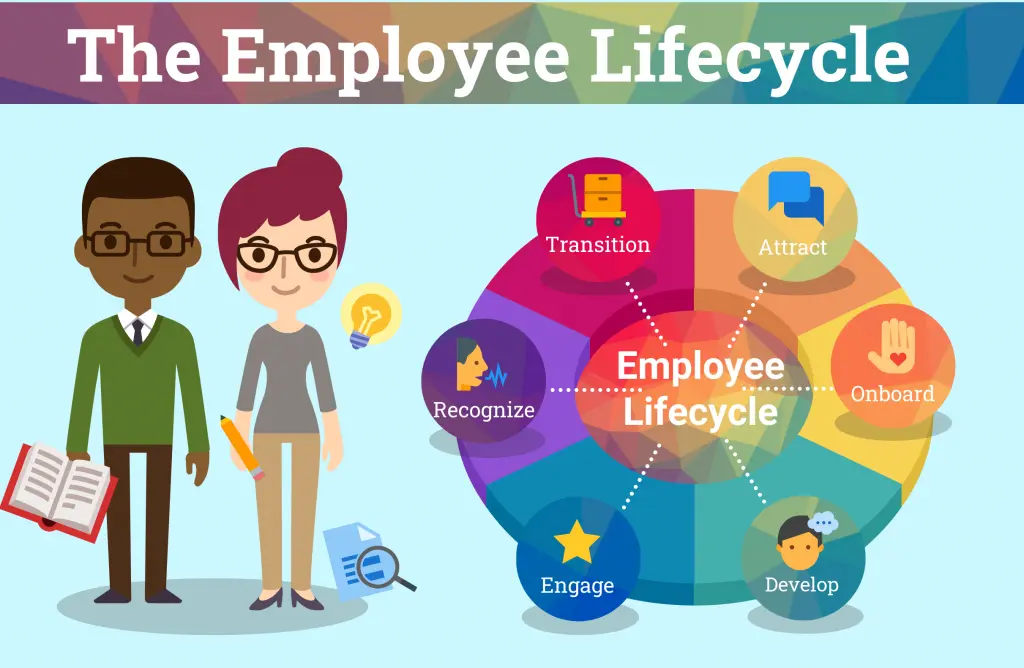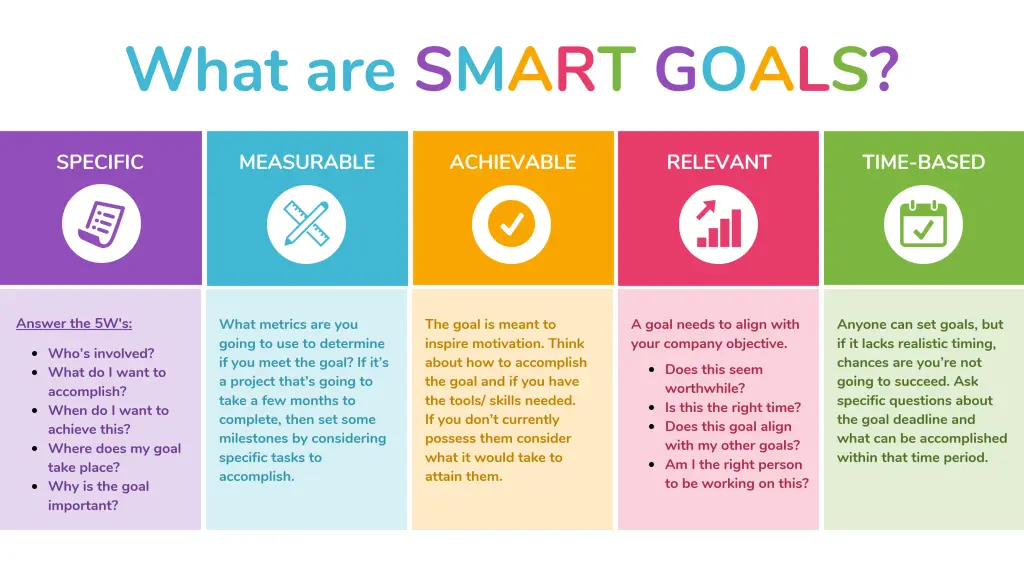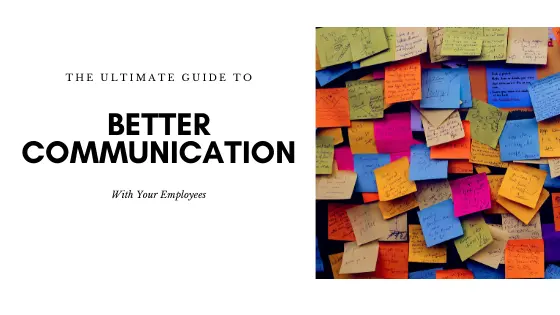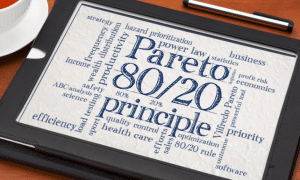Have you ever spoken to someone and walked away feeling like they just didn’t “get it”?
Technology has been an incredible boon to business over the past few decades, but it has transformed the way we communicate at work in ways we are still trying to understand. Especially with the recent changes we’ve seen as a result of the coronavirus pandemic, business owners have been thrust into new ways of communicating with employees that have critical impacts on business.The stakes for getting it right are high—and the way we communicate requires different skills and techniques based on which stage of the employee lifecycle employees are at, as well as the various communication styles at play.
But first, it’s critical to understand a bit about the nature of communication itself.
The Basics of Emotional Intelligence
How often do you have misunderstandings at work? In your personal life? How has technology played a role in how you communicate and receive information?
In all cases, most misunderstandings are due to a clash of listening and communication styles—but we can all manage to improve and practice better communication once we understand the functions of communication, and how our own perceptions play into the mix.
Language matters at work. Ensure that the language you use, isn’t wielded as a weapon.
Consider the following
Emotional Intelligence has long been understood to affect life success, and in short, it can be summed up as the mixture of awareness, management, motivation and recognition required to have successful interactions with people that leave both parties feeling heard and understood. Researcher Daniel Goleman describes the five aspects of Emotional Intelligence:
- Knowing your emotions – If we don’t know what we are feeling, it can be hard to communicate. Everything from our verbal reactions to our physical body language is affected by how we are feeling at the moment.
- Managing your emotions – When you can put a name to something, the ability to manage it becomes much easier. Recognizing how your emotions are affecting you helps you to manage your response into something which is appropriate to the situation at hand. Not doing so can sabotage your success.
- Motivating yourself – Aligning yourself with the outcome you need and want from an interaction helps to frame any differences in understanding as opportunities to add clarity.
- Recognizing and understanding other people’s emotions – When we shift awareness outside our own emotions, we can focus on the verbal and non-verbal cues we are receiving from others we are communicating with and add value to how we respond.
- Managing relationships – This one I call the ‘chameleon’ approach. Managing relationships successfully is about being able to shift communication styles multiple times throughout the day based on the styles of those you are dealing with and is something that becomes easier with practice.
Let’s look at a practical example of how better communication makes a difference:
Tim arrives at work and discovers a critical task that was supposed to be completed is still undone. You approach the employee responsible and demand answers as to why it was not completed and insisted on its completion by the end of the day. The employee quietly agrees and walks away.
At the end of the day, the task will get done, so why doesn’t Tim feel good about it?
Well, in this scenario, Tim’s kids were a nightmare to get out of bed, and he left late, which led to a stressful commute to get to work on time, and he didn’t get to pick up his morning coffee on the way.
Now, if Tim was able to recognize his emotions, he’d understand that the stress he was feeling had nothing to do with task completion and would be able to manage his emotions accordingly. Additionally, recognizing the body language of the normally exuberant employee would tip him off that there was something not right. In this case, Tim needs to balance his motivation to get the task completed with successfully managing the employee relationship.
By managing his response, Tim can inquire as to the reason behind the task failure and the unusual demeanour of the employee. In this example, there was a personal emergency the afternoon prior, which prevented the employee from completing the task. Knowing this, Tim can respond accordingly by acknowledging the emotional state of his employee, offering support as necessary to validate that experience and come up with an alternate plan that works to satisfy the outcome needed.
Instead of a great employee walking away shamed, feeling unheard and planning their exit, we have set the communication standard of an employer who values that employees bring their whole selves to work, and are able to work around obstacles in a way that adds value to employee relationship and boosts the productivity required to manage organizational objectives through setbacks.
How to Create Better Communication (and avoid misunderstanding)
At the root, communication is transactional. The Ted-Ed video below focuses on the ways we give and receive feedback and how that forms meaning. It’s a quick view but essentially acknowledges that we send and receive messages and information through our own subjective lenses. These views of the world are unique to us and are informed by our own knowledge, lived experiences, age, gender, ethnicity, religion, upbringing, etc.
The video offers four strategies for avoiding miscommunication:
- Recognize that passive hearing and active listening are not the same things. Active listening involves listening with all senses, reflecting on what was said and seeking clarification that you are both on the same page.
- Communication is more than just words. As with the example above in Emotional Intelligence, communication is about posture, eye contact, body movement, as well as the actual words that are said.
- Put as much effort into trying to understand as you do in trying to be understood.
- Be aware of your personal subjective filters and how your experiences lead you to approach a situation. Try saying, “This is how I see the situation, but how do you see it?”
Why Does the Employee Lifecycle Have to do with Better Communication?
Simply put, employees at each stage of the cycle have different goals, different expectations and different driving factors that influence how they communicate—and how they receive information in return. The five stages that employees find themselves in their journey are: Attract, Onboard, Develop, Engage, Recognize and Transition. Let’s have a look at each and how communication differs:

Step 1: Attract
This stage sets the entire stage for your company and is compiled of your current external communication, marketing, and brand identity as well as the specific language of your job ad and how you conduct and communicate with employees during the recruitment process.
Candidate Satisfaction Rate
Potential employees come to your organization with a preconceived set of notions about your company, and their experience as it’s shaped by the recruitment process can provide valuable information about the way your organization is perceived, both in terms of employment and customer experience. The results of these surveys can inform ways in which to improve your employer brand going forward.
Employer Brand
Your employer brand is how your business is seen through the eyes of the people who work there—and the people who potentially work there. Simply put, it’s the first thing someone thinks when they think about your company, and it has a lot to do with what your customers think as well.
Interested applicants will often search your company before they even consider applying. The information they find will largely inform their decision to apply or move on. Everything from customer reviews to product quality to employee reviews on sites such as Glassdoor is fair game and forms a huge part of your reputation.
If you haven’t done an internet search for your company in a while—now’s the time to do it. Take the resulting information and answer the following questions:
- Did the results match up with what I thought I might find? If not, where is the difference?
- Would it be difficult to convince someone to work with us based on that information alone?
- If there was no info about us, why should someone consider our company?
- What is our Employee Value Proposition (E.V.P.)? (What do we offer employees that is unique to us, and makes us attractive to prospective employees?)
An Effective Job Ad
When it comes to a good job ad, your aim is to tell the story—and then stop talking! Research tells us a great job and should hover around the 300-500 word mark to garner the most responses & the voice you use should match that of your culture and employer brand. Remember, you are writing it for the candidate, so put them first before defining the requirements of the job. Avoid jargon and cliché phrases (like ‘rockstar’ or ‘ninja’) and don’t begin with a long diatribe about your organization before you set the stage to pique the interest of potential employees.
- Avoid gendered language that inhibit potential candidates from applying (Textio and Gender Decoder are great tools to help you identify problematic language in your ads)
- Ensure the information you are requesting doesn’t screen out candidates from protected classes
- Consider whether the qualifications you are asking for are bona fide occupational requirements. How do you honour a mix of experience and education, for example, or non-standard career-paths?
The Interview
Now, more than ever, communication matters when bringing a new member to your team, and with all the uncertainty in the world, waiting to hear back about a job shouldn’t be one for potential employees. That’s employee ghosting, and is a problem we’ve written about before. During the initial application phase and subsequent screening, you will have whittled your list down to a final group to interview. However, that doesn’t mean you have no use for those who didn’t make the cut. A compassionately worded communication stating they haven’t been chosen helps close the feedback loop and frees up candidates to accept other offers or pursue other opportunities. Plus, it speaks volumes to your employer brand—more so with those you interview and don’t move forward with.
Recruitment Communication Tips
- Don’t wait for the entire process to be over – If you know a candidate will not be moving forward develop a strategy to communicate this compassionately at an earlier stage. Respect their time.
- PERSONALIZE – Having a lot of candidates to notify is never a reason to send form communication. In today’s day and age technology assists to help you do this on a mass scale with personalized information that honours the people who want to join your company (and are likely customers or potential customers).
- Be brief – consider listing some strengths but ultimately keep the rejection brief. Try to sum it up in one brief statement. “We were impressed with [enter skills], but ultimately we have decided to go with a candidate that has more [enter skill] experience.” or, if they haven’t made the interview stage, simply let them know you appreciate them, however you wanted to reach out and let them know they wouldn’t be advancing.
- Ask for feedback – The candidate experience is an important one, and tracking that feedback provides critical hiring metrics you can use to continuously improve. Don’t skip out on asking candidates for their feedback, and don’t lack the courage to deal with the feedback you do get.
Step 2: Onboard
The overall goal of an onboarding program should be to develop high-performing employees in the shortest amount of time possible, but you also need to ensure you are focusing on connecting people to your culture—not just the ‘nuts and bolts’ of how to do their job. A well-rounded onboarding process helps employees answer the ‘why’ of their actions and leaves them with an understanding of how their role connects to the overall vision of the organization, and better yet, helps them see how their contribution makes a difference. That connection helps to create ownership thinking, accountability and a level of satisfaction that fuels an employee’s desire to do good work.
Once the offer is signed and accepted, send the employee a pre-boarding welcome package, which gives them all the basics they need to begin. Important documents take time to read over and understand, so don’t waste time on the first day doing the signing. Some ideas for inclusion:
- Paperwork: Benefits, policies, anything else that needs signing.
- A brief summary of your business and what your culture is all about
- An overview of important information (pay cycles, parking or transit access, dress code, who’s who etc.)
- A F.A.Q. with common questions, new hires may have about working for your organization (if you don’t know, ask your current employees what they would have found useful when they started)
- A review of their start date and time
- An official welcome from their working group that shows the new hire you can’t wait for them to begin their adventure with you—something personal and fun from the team.
REMINDER – We live in a time of easy technology. Shoot a smartphone video of the employee’s workspace with their teammates providing a quick word of welcome. A picture of the team holding a piece of paper that says, “Welcome (employee’s name)!” A photo of their workspace, uniform tag, locker etc. that’s been personalized with a message of welcome, etc. There are a ton of easy, cheap and creative ways you can go above and beyond to make new hires feel like they are entering an environment that wants them as much as they want you.
For a review of what makes a good process, view the video below:
Step 3: Develop
This is the meat and potatoes of an employee’s tenure and the one which creates the most opportunity for communication blunders. There is a myriad of situations that can occur, but for the sake of this guide, we’ll focus on addressing workplace issues, managing performance and setting goals and expectations.
Addressing workplace issues
Communicating effectively about problems in the workplace largely comes down to confidence, tact and emotional Intelligence, but there are a few sure-fire tactics to help you manage a situation and stop it from spiraling out of control.
- Be consistent – Clarity of information, if applied consistently, is the best chance for avoiding misunderstandings in the first place.
- Communicate Directly – if there is an issue, never rely on ‘faceless technology’ (like email or text message) to address it. Respect that communication is transactional, and provide the opportunity for face to face interaction to support the non-verbal aspects of communication (even if this needs to be done via video chat).
- Assume good intentions – Insist on this as a hallmark of your company’s communication style. When everyone comes to the table assuming the good intentions of others, the focus shifts to understanding rather than blame.
- Encourage honesty – create an environment that encourages feedback, healthy conflict and open exchange of ideas. Ensure people’s opinions are valued and not judged. When people feel free to communicate (tactfully) about an issue, there is less build-up of unhealthy stressors that tend to affect works quality and output.
- Set time aside to listen – Ensure active listening becomes a natural part of every difficult discussion. 46% of employees leave a meeting with no clue what they are supposed to do. By circling back to mutual understanding, and supporting that by a verbal agreement that you understand the other person correctly makes the work of rebuilding relationships easier post-meeting and will help in efforts to follow-up on progress.
Managing Performance
Performance management is a communication process by which managers and employees work together to plan, monitor and review an employee’s work objectives and overall contribution to the organization. It is NOT a box to check or a yearly event that forms the basis for salary decisions.
It is the continuous process of setting objectives, assessing progress and providing ongoing coaching and feedback to ensure that employees are meeting their objectives and career goals.
There is much more to performance management than the annual performance review meeting. In fact, all you need to do is sit down and ask them how they’re doing, how they’re feeling, and how you can help them out. Don’t skimp on employee development.
The specifics of managing performance come down to creating one-on-one meetings that acknowledge goals, stop problems before they begin and reinforce the value that an employee brings to the team. Doing this regularly builds trust and makes broaching difficult subjects easier. See how to run an effective one on one in the video below, or see our article on how one on one meetings can save your business, keeping in mind the key components are facts, great listening and agreeing on an action plan. You’re employees should be doing 90% of the talking in these meetings. Ask open-ended questions that provide insight into the wellness, productivity and happiness of your employees. Often cases, performance issues come from seemingly unrelated root causes. Communicate in a fashion that brings it out, and prepare to deal with the results.
“How’s Life?” is potentially one of the most powerful questions that an employee can be asked during a one-on-one. When employee’s feel that their entire person is welcomed into to workplace, they perform better.
Setting Goals for Better Communication
Often, the most difficult part of the performance management process is developing clear and appropriate language to describe performance objectives and measures or indicators of success. Clarity of emotion can be a real boon here.
Performance objectives need to be a good representation of the full range of duties carried out by the employee, especially everyday tasks that take time but are often not identified as significant accomplishments.
To do this, the objectives and indicators need to be S.M.A.R.T.

Long considered the gold standard for goal setting, and SMART goals are those that are:
- Specific
- Measurable
- Achievable
- Relevant
- Time-Based
The key is to set goals with your employees, not for them. (don’t be that boss) To do this, ask the following questions:
“What would you like to achieve this year?”
“What are some of the goals you have in your role?”
“How would you like to grow?”
“Is there any professional development you’re interested in?”
“Do you want to progress through the company?”
“Are there any roles you have your eye on?”
“What are some things we can change to make your job
more meaningful/fun/easier?”
“Do you feel like you have good support here?”
“How can I help you achieve your goals?”
“What more do you need from me?”
Step 3: Engage
Employee engagement is not employee satisfaction. Engagement is how passionate your employees are about the job they are doing and how attuned they are to the mission of the organization—and their part in it (ie: their loyalty). Simply put, if you want to know if your employees are engaged—and to what extent—you need to ask.
There are many ways to ask for this information, town hall formats, roundtable discussions, formal surveys, pulse checks or Net Promoter Scores, but assuming you know what the engagement challenges are in your organization is a sure path to failure.
At SalesUp! we lean on the ‘4 C’s Model’ of employee engagement: Culture, Communications, Commitment and Compensation.
By tailoring questions to touch on all four pillars, we get a fuller picture of the sense of self employees bring to work, how attuned they are to the mission of the organization and how they see themselves fitting into the big picture.
The main constant in seeking out feedback from employees, and the one most businesses fall short on, is in ensuring feedback received is reviewed, taken into consideration and most importantly responded to by the organization. When organizations seek feedback and then do nothing with it, or don’t tell employees what they’ve done, it can cause further damage than never having asked for it in the first place. Once you have actionable data, you can see a clear path forward in ways that are customized for the challenges of your workplace.
The principles of communication during this phase don’t really vary from any of the principles above; the only difference is that follow-up and creating action are two critical aspects that cannot be ignored. Some best practices:
- Ask the right questions
- Choose the right managers and invest in them (they are the 20% that will affect 80% of the after-effects of engagement strategies)
- Make employee engagement part of their own performance objectives
- Hold managers accountable for the quality, frequency, and clarity of communication with employees
- Define goals on an organizational level
- Respond regularly and update on feedback progress
- Follow-through!
Step 4: Recognize
Recognition may not guarantee success 100% of the time, but it is an immutable fact then when employees feel invisible, or can’t see how their work fits into the big picture, they will switch off, and you’ll be left struggling with the effects of an underperforming employee. In fact, Gallup reports that employees who aren’t recognized for their work are twice as likely to quit.
A recognition program doesn’t need to be a splashy or expensive affair, but beware it is a manifestation of your company’s values. In that case, ask yourself what your company values most and ensure the behaviour you are recognizing aligns with those values. Some examples are:
- Trust
- Teamwork
- Accountability
- Passion
- Integrity
- Diversity
- Innovation
- Quality
Recognition can take many forms from formal events to informal peer-to-peer programs, but keep in mind the personal style and preference of the recipient when communicating praise to ensure it falls with the sincerity and good intention with which it was offered.
Long ago, employees in the parking office at a government office where I worked started gifting each other a plastic frog when they had done something over and above. It was even given a name. This became quite a cultural phenomenon and badge of honour for the employees. Eventually, this program worked its way into the rest of the office, and the FROG program was adopted and made its way to every single department in the local government. It was so popular because it was fun and embodied the cultural environment of the organization and the values of integrity, excellence and wellness. The communication resonated because it was delivered in real language that fit the social culture of the organization.
In fact, recognition works best when it is frequent, timely, sincere, specific, personal, and public (based on the specific communication preferences of the individual being recognized)
The key to communication in recognition is to know what kind of recognition is valued by an employee. Is it a handwritten card?, a phone call from the owner?, free lunch?, a certificate?, recognition in the newsletter?, the ability to go home early on a Friday? Knowing how an employee likes to be recognized is just as important as recognizing the behaviour in the first place and is a critical job of a manager to find out.
Step 5: Transition
Anytime you have an employee transition, whether it’s to a different role or department or an exit from the company, you should take the opportunity to communicate with the employee. If you already have a culture of openness and trust, this information will be fairly easy to judge with accuracy, but if there are some issues on this front, you may have to read between the lines to get an accurate assessment of what an employee’s true perception of their tenure was. Here are some tips for better communication during the exit interview.
1. Be sure to provide a copy of the questions you’ll be asking, or at least an overview of what the employee can expect to speak with you about at least a day before. This goes a long way to reducing defensiveness during the meeting and allows them to think about some responses.
2. Don’t get too focused on one particular person. It’s fine if issues stemmed from one relationship, but it’s more the overall broad concept of how can the organization handle these things better in the future, so they aren’t left with these unexpected departures vs. a pissing match about one person’s style (the aim is to get useful improvement information rather than a long list of fault about a particular person or subject)
3. You do need to ask permission to share the information if you want to bring specific feedback to a department or manager within your organization.
Some questions you may want to ask (and you already know when and how to ask for more clarifying information where necessary):
- Was your time here longer, about the same, or shorter than you expected when you first joined us?
- What were your goals for yourself when you first started?
- Did the duties/demands of the job match your expectations?
- Did you have the proper tools, resources and training to do your job effectively?
- Did you feel you were part of a culture that allowed you to succeed in your role?
- What led you to seek employment elsewhere?
- What could have been done differently, to allow and employee like you to want to stay?
- What did you enjoy most about your job? Least?
- How would you rate management’s recognition of your contributions? How do you think recognition of employee contributions could be improved?
- Do you have any suggestions on how we can improve employee morale?
- In the spirit of helping us improve, could you add anything else you think would be of value to know/improve on?
- Sometimes these interviews will be conducted face to face. If that isn’t appropriate, an online survey can be sent; however, an employee should always know it’s coming.




